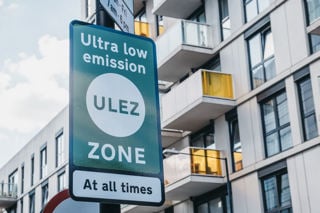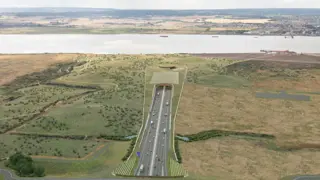Stephen Briers, group editor of Fleet News and Fleet200 members quizzed Jonathan Walker, head of cities and infrastructure policy at Logistics UK, on road investment, Transport for the North’s strategic transport plan, and clean air and zero emission zones at the latest Fleet200 Strategy Network meeting.
Stephen Briers: What are your thoughts on Transport for the North’s Electric Vehicle Charging Infrastructure report and transport plan and what learnings could be applied to other regions?
Jonathan Walker: We broadly welcomed what was in the plan, it was realistic and reflective of the conversations and engagement with the freight industry.
However, we want to see infrastructure plans go further to consider freight holistically. Most goods will be moved by road for the foreseeable future, but the nature of the movement will change. We want to see flexibility, adaptability and resilience built into our infrastructure.
If we are going to hit our climate targets it will not just be about decarbonising road transport, it will be about moving more freight by rail, water or other modes of freight movement where possible, and ensuring that there is better interconnection between different modes of freight movement.
Q: What is Logistics UK doing to attract more people to the HGV industry?
JW: We continue to campaign for more and better roadside facilities for drivers. HGV drivers have no choice when they must stop and that is not as appreciated by the industry as you might think.
We want to ensure that the industry is plugged into the core investment from the Government, but it needs more money - we are short of 1,400 HGV parking spaces.
It goes back to ensuring that freight is part of the road strategy and not an addition to it. Our ask is where there is any new scheme, that the need for driver facilities is built in from day one of that project. I've often seen that it’s the first thing that gets squeezed out because the land couldn’t be found and it wasn't in scope. It needs to be in scope from day one to be considered for investment.
We’re also running a Generation Logistics campaign, which looks more broadly at challenging the perceptions of the industry. The campaign showcases the wealth and diversity of careers in the logistics industry - but we must match the profession with the reality.

Q: Can logistics companies, manufacturers and suppliers provide investment into facilities and infrastructure?
JW: There are a lot of good examples of companies that are looking at this, for example, sharing electric vehicle (EV) charging facilities. Some companies have facilities for their drivers who bring goods to their warehouse – it’s a reputational thing and they want drivers to be rested and customers to feel like they’re valued.
I’m also aware that there are schemes out there that are looking at crediting facilities so that companies and drivers can assess and know that the facilities will be nice.
For some driver facilities elsewhere, it’s on those less populated stretches of the network, when a driver needs to take a rest and may not be at either end of the journey. It’s good practice on either end of the journey however, it’s the bit in the middle where we look to government or infrastructure providers.
We’re also having conversations with various motorway service area companies about the facilities they provide as there are some good examples, but there is just not enough of it where it needs to be.
SB: Considering public backlash to the expanded ULEZ in London, what’s your view on how this is rolling out across the country?
JW: It’s one of the benefits and pitfalls of devolution. We like the idea of economic decision-making being closest to the people who are affected however, that comes with a risk of patchwork policy across the country.
The strongest feedback I get is from companies operating across the UK. There are instances where policy has been introduced without sufficient engagement and understanding of the role of freight logistics in serving and supporting local communities. But the other headache is the patchwork of regulation, not just a lack of understanding within the bureaucracy.
We’re calling for greater standardisation of clean air zones, ensuring that they are regularly monitored in terms of impact and benefit. Single-passenger car journeys are one of the biggest contributors to congestion - so it is about what we can do to reduce those so the freight industry can get into our towns and cities to deliver goods and services and isn’t unfairly penalised.
SB: Part of the backlash in London is the view that it’s the first step before moving to a zero-emissions zone. Do you see local councils looking at the success of other schemes in other regions?
JW: One of the benefits of devolution is that you would hope you would learn from the best and ultimately end up with a system that achieves savings, improves health, reduces carbon emissions all while allowing vital goods and services to get into different areas. However, areas are still in the experimentation phases and might get it wrong.
One of the biggest messages we take to any local area is to avoid pushing the problem around. For example, single-passenger journeys, there are examples where the problem has cleared up in one place and passed on to neighbouring authorities. That’s where national transport bodies can come in and take that bigger holistic view across the region.
Q: Would you anticipate similar standards to the new upgraded Direct Vision Standard (DVS) in London to be introduced elsewhere?
JW: We’re already aware that Manchester has talked about a Vision Zero ambition. In all areas of policy and cities, where London leads, other places tend to follow. Our first initial comment on any policy is to ensure that there is a consistency of policy across the board, for operators that are operating in Manchester, London, Leeds or wherever it might be.

























Login to comment
Comments
No comments have been made yet.